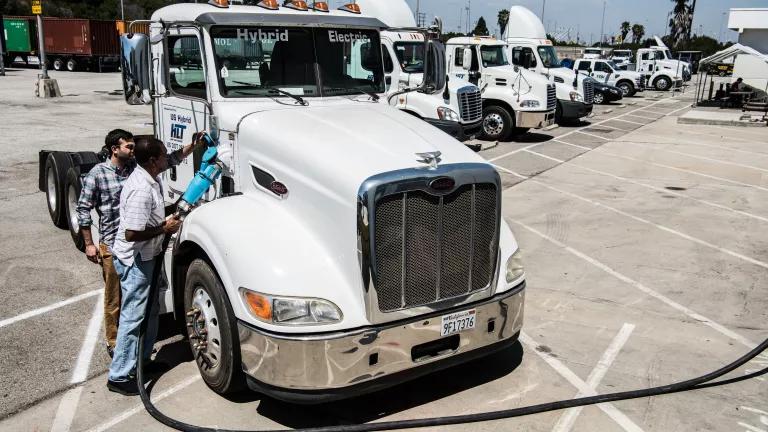
Massachusetts’ climate plan is one of the most ambitious in the nation, but a recent decision by the utility commission there could leave the commonwealth short of its carbon-cutting goals. The state needs massive new investments in electric charging, but the commission denied over $150 million in new investments on new EV chargers as it waits to see the impact of an earlier pilot project.
While more of a hiccup than a disaster, the Bay State’s experience is a warning sign for other state regulators and utilities. Regulators need to plan for and approve fast-acting, large-scale investments in the charging infrastructure needed to achieve state greenhouse gas reduction goals. In addition, utilities need to think big and move past proposing small pilot programs when there is enough data from well-established utility investments in EV charging stations that show their benefits.
To reduce greenhouse gas emissions from the transportation sector and mitigate the effects of climate change, Massachusetts wants to have 300,000 electric vehicles on the road in just over five years. There are two types of charging stations necessary to support the developing electric vehicle market and help the commonwealth achieve its goals.
Level 2 chargers add about 10-20 miles of range per hour of charging and are often found at “destinations,” such as restaurants, homes, malls, and workplaces. DCFC chargers add about 60-80 miles of range per 20 minutes of charging and are often found in places “en-route,” such as convenience stores, traditional gas stations, and highway rest areas. Charging stations may be built to serve multiple vehicles simultaneous by offering multiple plugs or “ports”. The needed ramp-up of both types of charging infrastructure won’t happen in a bubble and will take aggressive programs and plans by states, the private market, and utilities.
National Grid, a major utility in the commonwealth that serves more than 1.8 million customers, estimates that more than 50,000 public Level 2 (“L2”) ports and 2,000 public Direct Current Fast Charging (DCFC) ports will be needed by 2025. Currently, there are only 1,671 L2 ports and 284 DCFC ports in the commonwealth.
In 2017, National Grid sought approval from DPU for a $25 million Phase 1 electric vehicle program. Phase 1 was a commendable initial step by the utility but was small in scale and failed to incentivize transportation electrification across several sectors. Additionally, Phase 1 provided funding for only around 1,200 L2 and 80 DCFC, far from the estimated necessary infrastructure. Two months later, National Grid filed for its $166 million Phase 2 plan to greatly expand the reach of EVs.
Phase 2 included programs that would have added 17,000 electric vehicle charging ports to the commonwealth, increase transportation electrification in disadvantaged communities, and fund a robust education and outreach plan.
Unfortunately, the commission only approved approximately $9 million of the $166 million proposal and only approved programs that were “new” and did not expand or improve upon Phase 1 programs. The Department stated:
“Although the Department disallows the majority of the Company’s proposed…EV Program for cost recovery at this time, our findings should be not be construed as opposing the expansion of the Company’s EV Programs when appropriate.”
While the DPU seems amenable to future utility investments in electric vehicles, it missed an important opportunity to expand charging infrastructure now, simply because there was not enough data from Phase 1. Instead of waiting for data from Phase 1, DPU should have looked at the experiences of other utilities and commissions throughout the country that have proposed and approved similar programs. There is a decade worth of data and studies to show the societal, economic (such as downward pressure on rates), and environmental benefits of utility investments in charging programs and infrastructure.

Societal benefits of electric vehicles in Massachusetts through 2050.
The time for small-scale utility electric vehicle programs and pilots of proven technologies is over. But for commissions to approve large scale programs, utilities need to first propose large scale programs. It’s important that utilities utilize available data, studies, and resources to justify the scale of their programs and the effects that they have on state goals. If commissions feel hesitant for full approval, the data available from other jurisdictions should warrant conditional approval.
Regrettably, it looks like National Grid will have to wait until at least 2021 before trying again for a large-scale program because DPU ruled that the utility can’t propose additional electric vehicle programs until data and results from year two of Phase 1 are available. With Massachusetts climate and zero-emission vehicle target dates fast approaching, the commonwealth will have to come up with new strategies to achieve its goals.




